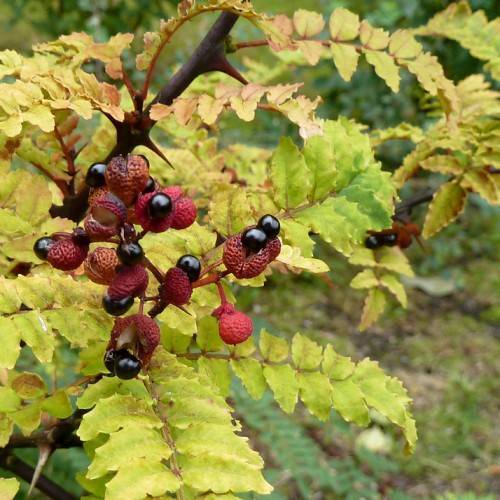
Japanese pepper
Zanthoxylum piperitum
Cycle:
Herbaceous Perennial
Watering:
Average
Hardiness Zone:
8
Flowers:
Flowers In Summer
Sun:
Full sun
Soil:
Well-drained
Fruits:
Fruits In Autumn Ready In Summer
Leaf:
Yes
Growth Rate:
High
Maintenance:
Low
Care Level:
Medium
watering
Water Calla lily plants thoroughly when the top inch or 2 of soil feels dry. Water until liquid oozes from the drainage hole at the bottom of the pot, then discard the excess. Allow the soil to dry slightly between waterings. Calla lilies do not like to sit in pools of water, which can lead to root rot. During their active growing period (spring and summer), Calla lilies should be watered more frequently. Water every 7–10 days when temperatures are moderate to warm. Fertilize monthly during the active growth season.
sunlight
A calla lily (Zantedeschia cvs.) requires direct sunlight for approximately 6-8 hours a day. Depending on the region and season, the amount of sunlight the plant receives may vary slightly. For example, in the summer months, when the days are longer, the calla lily needs 8-10 hours of direct sunlight per day. During the winter months, when the days are shorter, the calla lily needs 4-6 hours of direct sunlight per day. When a calla lily is grown indoors it’s important to make sure the plant receives an adequate amount of direct sunlight. To create the best environment for the calla lily position the pot near a south-facing window. This will provide the calla lily with the necessary 6-8 hours of direct sunlight needed each day. To ensure a healthy and vibrant calla lily consider supplementing natural light with an artificial grow light in times where the hours of natural sunlight are inadequate.
pruning
Calla lilies (Zantedeschia cvs.) should be pruned twice per year. In the spring, dead flowers and any foliage that is discolored, damaged, or spotted should be removed. Pruning back the spent flowers also encourages new and additional blooms. In the autumn, the tuberous rhizomes should be pruned back to ensure better over-wintering and a larger flower display the next season. With pruning, the calla lily will return each year in a bigger and better show.
